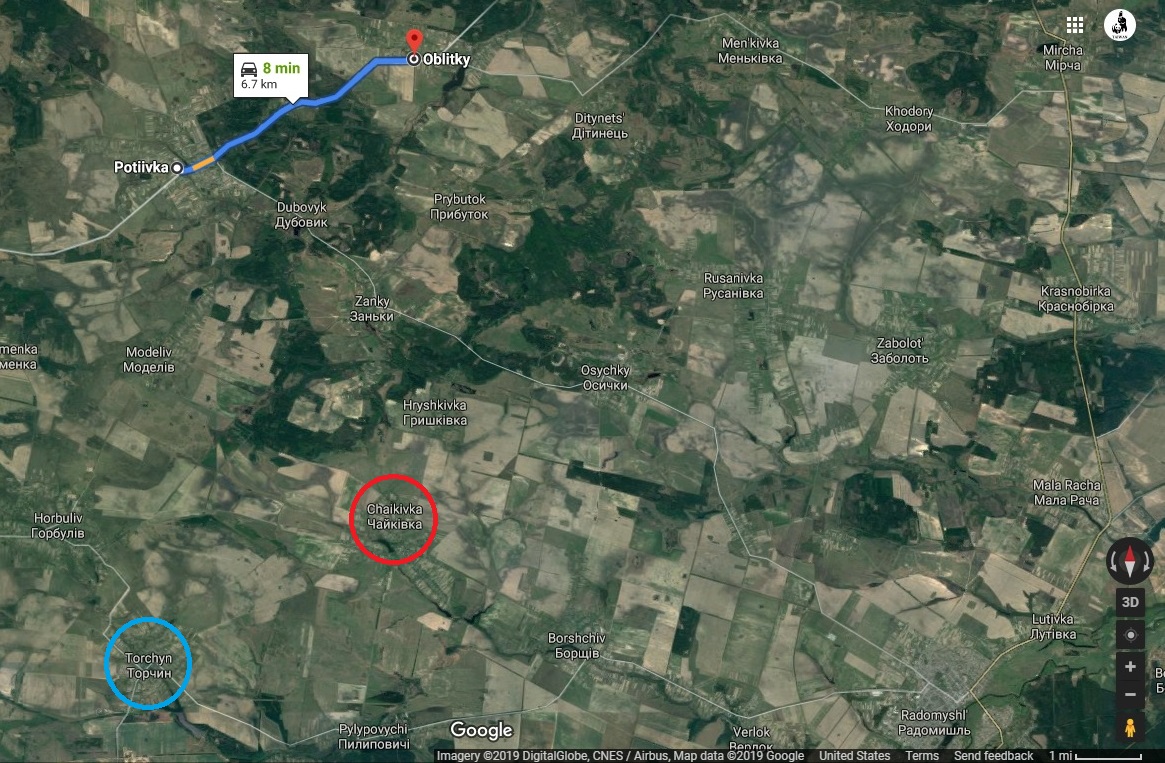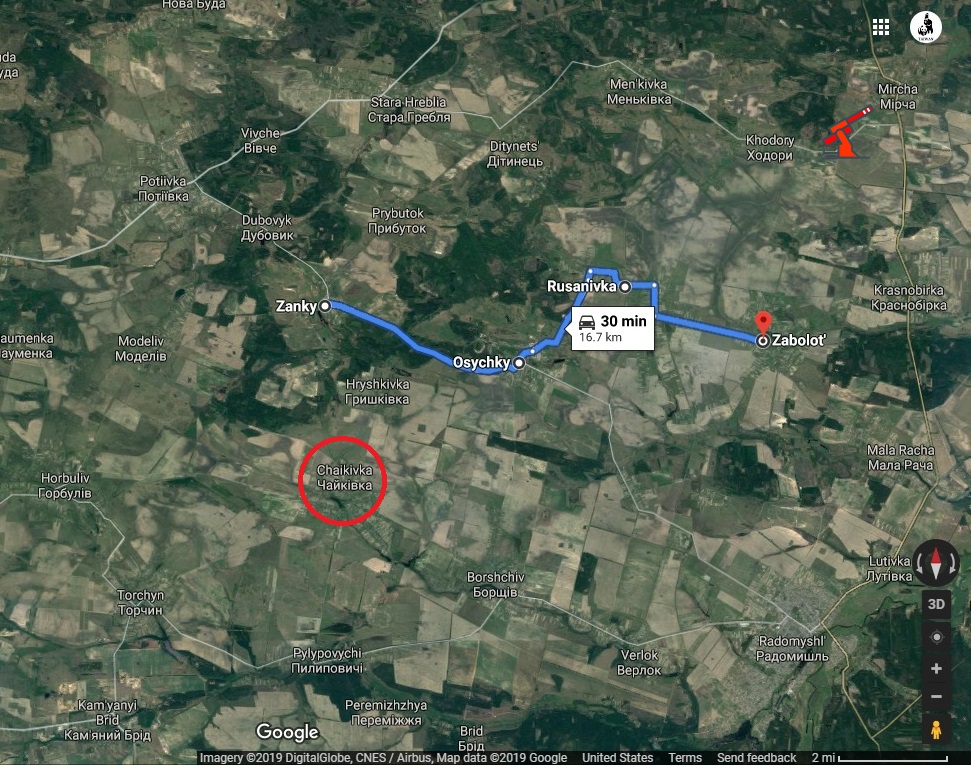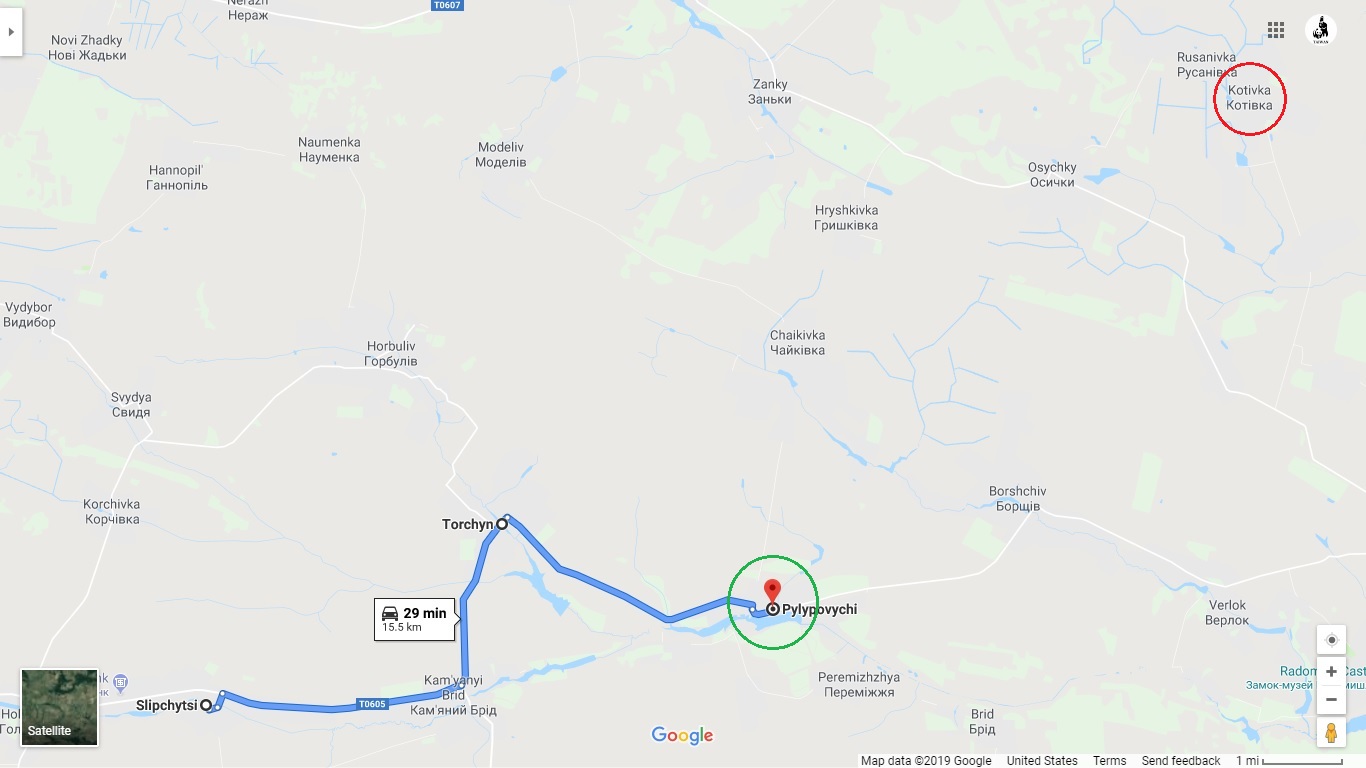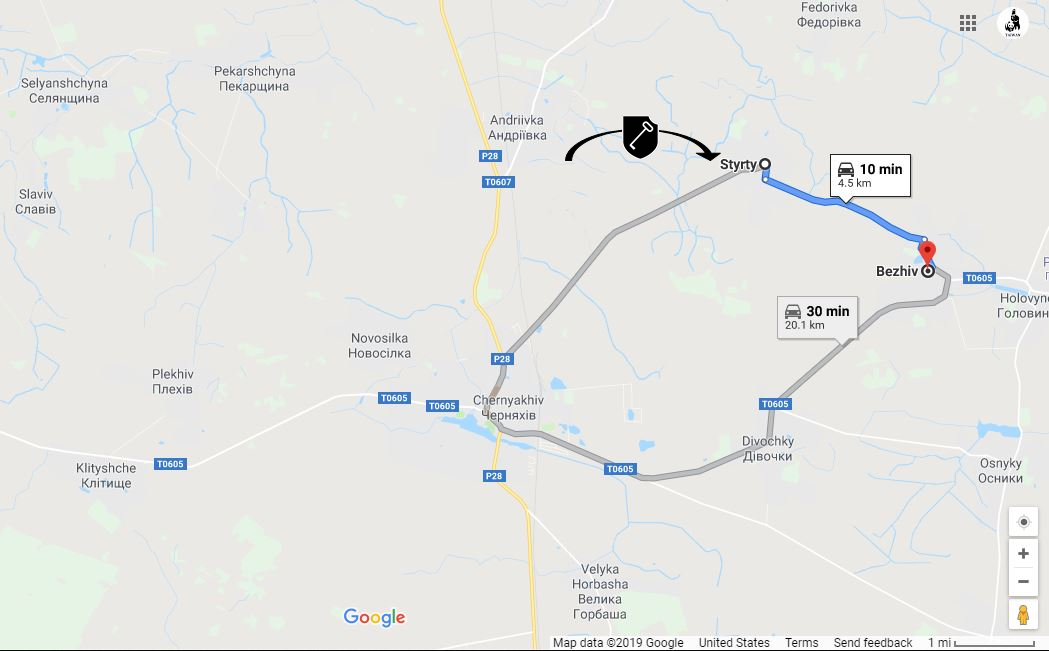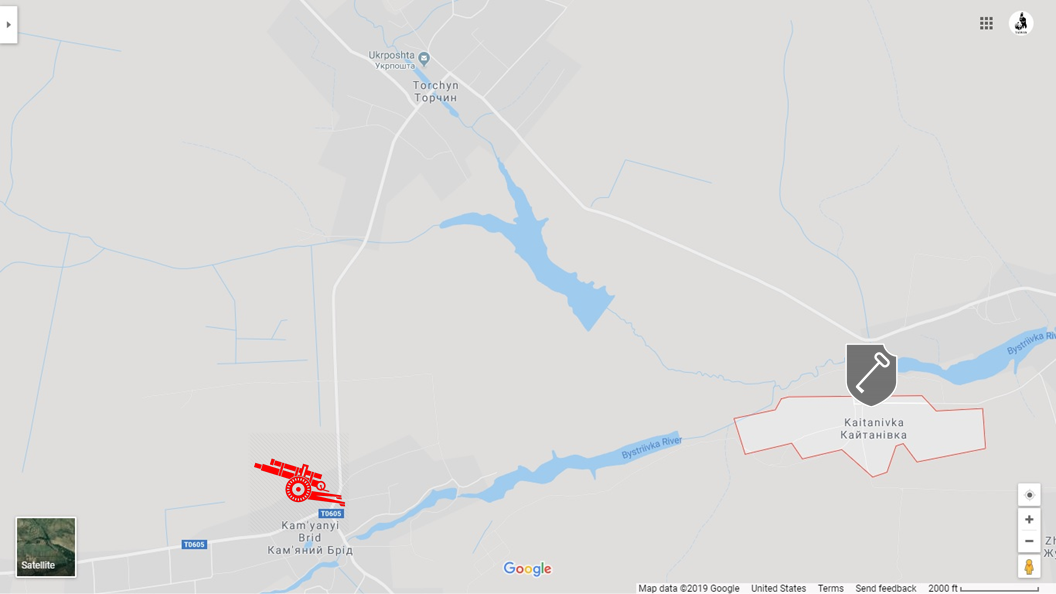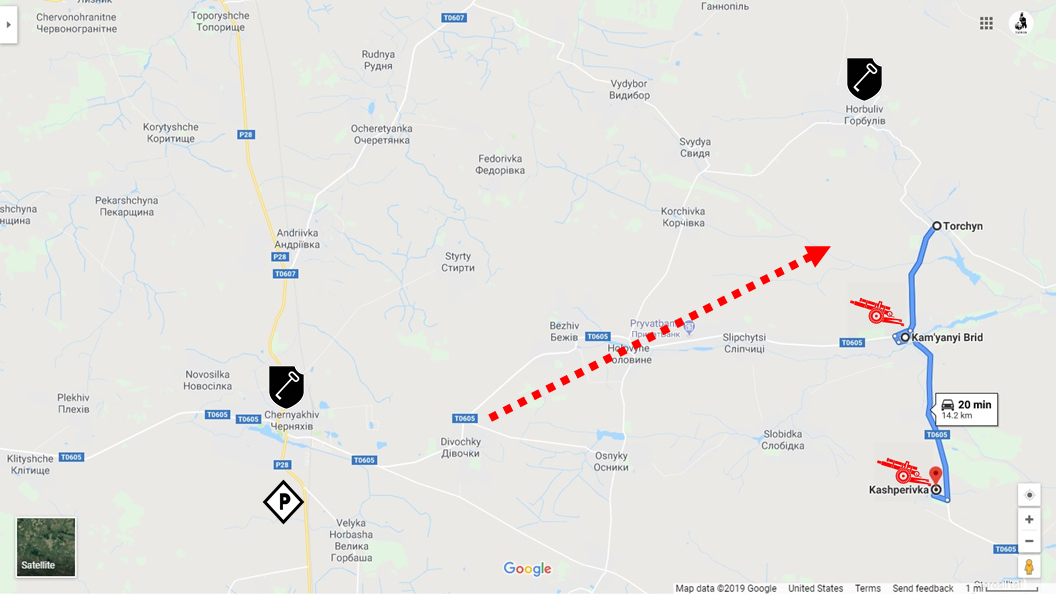Featured Image: Pz.V and “T-34” at Taraski.
Copyright © Rolf O. G. Stoves. R. Die 1. Panzer-Division (p. 704)
Haze with rain. Clouds hang with height of 100 to 200 meters. Temperature ranges between minus 1 to 3 degrees. [1]
General Hermann Balck of the XXXXVIII. Panzerkorps was busy regrouping his exhausted panzer divisions on the west of Chopovychi station during the night of 21/22nd of December, except the 7. Panzer-Division fought on the southern bank of Irsha River. However, the progress of regrouping was delayed by uninterrupted skirmish fights throughout the night.
At 0005 hours, the SS-Panzergrenadier-Regiment 2 was allegedly attacked by the enemy while it tried to hand over its old position to the 1. Panzer-Division. The attack was repelled. [2]
At 0210 hours, the regrouping continued, the SS-Panzergrenadier-Regiment 2 was attacked again. This time the enemy was with tanks. The situation was unclear until 0600 hours. [3]
By 0600 hours, the 13th Guards Tank Brigade, the 111th Tank Brigade and the 226th Rifle Division allegedly cleared out the woods west of Chopovychi station. Their further progress was delayed by organized enemy anti-tank defense from the woods on the south of the village Lyplyany (Липляни). [4]
By 0800 hours, after suffering heavy losses, the 13th Guards Tank Brigade the 111th Tank Brigade allegedly broke into the woods area on the south of Lyplyany. [5] The 162nd Tank Brigade, at the same time, took up its jump-off line in the forest 2 kilometers west of Lyplyany. [6]
At 0820 hours, the 4th Guards Tank Corps claimed that an enemy force with twenty-three Tigers launched counterattack against the 111th Tank Brigade and 13th Guards Tank Brigade near Lyplyany. Destroyed five enemy tanks while suffered significant losses, the brigades were forced to retreat and take up new defensive position in the woods west of the Chopovychi station. [7]
At 0900 hours, the 162nd Tank Brigade launched attack toward Lyplyany and allegedly took possession of the village by 0940 hours. The spearhead of the brigade reached the flour mill of the village, where it met fierce artillery resistance. The brigade commander decided to leave two T-34’s at the flour mill as rearguard, while the main force of the brigade kept pushing forward towards the village of Stremyhorod (Стремигород). [8]
Attacked by the 1.Panzer-Division from Stremyhorod and the SS-Panzer-Division LSSAH from the village of Bolyarka (Болярка), the 8th Rifle Division acknowledged suffering one hundred and eighty-five casualties during the day, but claimed inflicting losses of eleven tanks, four self-propelled guns, two armored vehicles, one artillery piece, five machine guns and at least two hundred and fifty casualties upon the enemy. [9]
At 1105 hours, the offensive of the LSSAH was commenced by the SS-Panzergrenadier-Regiment 1 on the left, the SS-Panzeraufklärung-Abteilung 1 on the middle and the 212 Reserve-Grenadier-Regiment on the right from the area of south and southeast area of Bolyarka station to Meleni. The offensive, however, gained ground slowly. [10]
The 226th Rifle Division claimed that there were two Tigers with flamethrowers approached the edge of the position of 2nd Battalion of the 989th Rifle Regiment at 1100 hours. Both Tigers were driven away by anti-tank artillery fire. [11] Meanwhile, the LSSAH allegedly had only two Tigers under operational conditions during the day. It was a possibility that both Tigers served as decoy to probe the defense fire of the enemy. [12]
At 1300 hours, the 226th Rifle Division claimed that another group of enemy in larger scale – at least fifteen motor vehicles – went into offensive against height 185.3 northeast of Meleni. The attack was beaten off. [13]
By 1400 hours, the 226th Rifle Division claimed that yet another attack from the southeast area of Lyplyany, formed by up to one-and-a-half battalions of infantry supported by at least fifteen tanks, against height 185.3. The attack was also beaten off by the counterattack taken by 20th Mechanized Brigade and the 985th Rifle Regiment. The 226th Rifle Division acknowledged suffering losses of seven machine guns, fifteen killed and thirty-two wounded, but claimed inflicted losses of four tanks, four self-propelled guns, one armored personnel carrier knocked out and up to sixty casualties upon the enemy during the day. [14]
The 111th Guards Tank Brigade, who was also involved in the battle of the height 185.3 at the same time, allegedly attacked by twelve enemy tanks and knocked down seven of them. The brigade held its ground despite losing cover from the riflemen of the 149th Rifle Division that withdrew from their original positions under attack. [15]
At 1500 hours, ten tanks of the 1.Panzer-Division were deployed to the southeastern area of Lyplyany to support grenadiers struggling to hold their grounds under heavy pressure from enemy tanks. [16]
At 1600 hours, the LSSAH claimed its spearhead lay in front of the 3rd defense-line of the enemy, 1500 meters north of Meleni. However, a new offensive to breach it was no longer to be expected. [17] At the same time, the 1st Ukrainian Front claimed there was a concentrate attack from the enemy with up to seventy tanks and two infantry battalions against height 185.3 and forced 8th Rifle Division to abandon the height area subsequently. [18] Last night, the LSSAH reported that there were thirteen tanks and fourteen assault guns under disposal were serviceable. [19]
At 1800 hours, the 162nd Tank Brigade allegedly took possession of Stremyhorod as far as its train station. However, the riflemen from the 149th Rifle Division lagged were still lagging behind. Without support from the riflemen, the brigade was forced to stop its advance. The enemy took the advantage to launch counterattack with a force of an infantry regiment and fifteen tanks and self-propelled guns. As result of the counterattack, the 162nd Tank Brigade was forced to retreat to the western outskirts of Stremyhorod, where the tanks of brigade met the anti-tank fire of the remaining enemy artillery and tank destroyers that they failed to clear out when they passed through the village. The brigade later acknowledged suffering losses of twenty-four tanks knocked out and burned along with fifteen men killed in action, but claimed eliminating six heavy tanks, eight medium tanks, one Panther, three Ferdinand tank destroyers, fourteen armored vehicles, five armored personnel carriers, twenty-three different type of guns and mortars, eight machine guns, twenty-five wagons and up to five hundred and thirty enemy soldiers during the day. [20]
At 1830 hours, the 149th Rifle Division claimed occupying several collective farms and settlements on the outskirts of Stremyhorod. The division allegedly destroyed up to six anti-tank guns, one all-terrain vehicle, one anti-aircraft gun and seventy enemy soldiers, captured sixteen POWs that day. [21]
On the opposite side of the battlefield, the 1.Panzer-Division did not portray much about the engagement in this afternoon. Instead, it claimed success in defensive battle in front of its new battle line on the south of Lyplyany. The II./Panzer-Regiment 1 and the Panzerjäger-Abteilung 37 allegedly shot down twenty-five enemy tanks in the north of the railway line. The I./Panzer-Artillerie-Regiment 73 deployed on the south of Lyplyany allegedly destroyed another ten T-34’s. But the attack of the Red Army continued. Some T-34’s tried to penetrate from the north towards the village of Stremyhorod were all allegedly destroyed. All in all, the 1.Panzer-Division claimed eliminating sixty-nine enemy tanks including T-34 and KV-1. Generalleutnant Walter Krüger estimated his division was attacked by almost two enemy tank corps during the day. [22]
At 1830 hours, the 111th Tank Brigade claimed that the enemy, supposed to be the LSSAH, resumed attack against height 185.3 with fifteen tanks and up to two infantry battalions. The 151st Rifle Regiment of the 8th Rifle Division was forced into retreat. The 111th Tank Brigade claimed it held the line nonetheless and destroyed seven enemy tanks. [23] The 8th Rifle Division described that the particular difficult battle was fought by the 151st Rifle Regiment during the day and a training-company under division reserve and a construction-company of the 229th Rifle Regiment were sent for reinforcement. [24]
By the end of 22nd of December, the 4th Guards Tank Corps allegedly eliminated nineteen enemy tanks and up to four hundred enemy soldiers, but suffered losses of eighteen T-34’s and seven SU-85’s in the battle. [25]
On the opposite side of the battlefield, the LSSAH allegedly captured six T-34’s, one Sherman tank, one 7.62 cm self-propelled anti-tank gun, three 2.2 cm artillery pieces, along with thirty POWs and thirty enemy bodies counted on the battlefield. [26] Later, the commander of the LSSAH replenished that its troops destroyed ten T-34’s, two of them were claimed by Tiger commander SS-Oberscharführer Georg Lötzsch that day. [27][28]
[1] TsAMO, Fund. 236, Inv. 2673, File 115, Sht. 88. Combat Logs of the 1st Ukrainian Front.
[2] NARA T-314, R-1173, F-342. Morgenmeldung an Pz.A.O.K.4. 22. Dec. 43, durchgegeben 0600 Uhr.
[3] NARA T-314, R-1173, F-342. Morgenmeldung an Pz.A.O.K.4. 22. Dec. 43, durchgegeben 0600 Uhr.
[4] TsAMO, Fund. 3402, Inv. 1, File 64, Sht. 17. Combat Logs of the 4th Guards Tank Corps.
[5] TsAMO, Fund. 3402, Inv. 1, File 64, Sht. 17. Combat Logs of the 4th Guards Tank Corps.
[6] TsAMO, Fund. 323, Inv. 4756, File. 149, Sht. 50. Combat Reports of the 25th Tank Division.
[7] TsAMO, Fund. 3402, Inv. 1, File 64, Sht. 17. Combat Logs of the 4th Guards Tank Corps.
[8] TsAMO, Fund. 323, Inv. 4756, File. 149, Sht. 50. Combat Reports of the 25th Tank Division
[9] TsAMO, Fund. 1062, Inv. 1, File 90, Sht. 72-73. Combat Logs of the 8th Rifle Division.
[10] NARA T-314, R-1173, F-347. Tagesmeldung vom 22. Dec. 43. Abschrift von Fernschreiben. 1800 Uhr.
[11] TsAMO, Fund. 1500, Inv. 1, File. 6, Sht. 132. Operational Report of the 226th Rifle Division at 2000 hrs. 22. Dec. 43.
[12] NARA T-314, R-1173, F-347. Tagesmeldung vom 22. Dec. 43. Abschrift von Fernschreiben. 1800 Uhr.
[13] TsAMO, Fund. 1500, Inv. 1, File. 6, Sht. 132. Operational Report of the 226th Rifle Division at 2000 hrs. 22. Dec. 43.
[14] TsAMO, Fund. 1500, Inv. 1, File. 6, Sht. 132. Operational Report of the 226th Rifle Division at 2000 hrs. 22. Dec. 43.
[15] TsAMO, Fund. 3402, Inv. 1, File. 6, Sht. 17. Combat Logs of the 4th Guards Tank Corps.
[16] NARA T-314, R-1173, F-349. Tagesmeldung an Pz.A.O.K.4. 22. Dec. 43, durchgegeben 1915 Uhr.
[17] NARA T-314, R-1173, F-347. Tagesmeldung vom 22. Dec. 43. Abschrift von Fernschreiben. 1800 Uhr.
[18] TsAMO, Fund. 236, Inv. 2673, File 115, Sht. 87. Combat Logs of the 1st Ukrainian Front.
[19] NARA T-314, R-1173, F-337. Ia Tagesmeldung vom 21. Dec. 43. Abschrift von Fernschreiben. 1800 Uhr.
[20] TsAMO, Fund. 323, Inv. 4756, File 149, Sht. 50. Combat Reports of the 25th Tank Division.
[21] TsAMO, Fund. 1378, Inv. 1, File 53, Sht. 317. Combat Logs of the 149th Rifle Division.
[22] Stoves. R. (1961). Die 1. Panzer-Division (p. 468). Hans-Henning Podzun Verlag.
[23] TsAMO, Fund. 3402, Inv. 1, File 64, Sht. 17. Combat Logs of the 4th Guards Tank Corps.
[24] TsAMO, Fund. 1062, Inv. 1, File 90, Sht. 72. Combat Logs of the 8th Rifle Division.
[25] TsAMO, Fund. 3402, Inv. 1, File 64, Sht. 19. Combat Logs of the 4th Guards Tank Corps.
[26] NARA T-314, R-1173, F-348. Tagesmeldung vom 22. Dec. 43. Abschrift von Fernschreiben. 1800 Uhr.
[27] NARA T-314, R-1173, F-349. Tagesmeldung an Pz.A.O.K.4. 22. Dec. 43, durchgegeben 1915 Uhr.
[28] Patrick Agte (2006). Michael Wittmann, Volume One (p. 208). Stackpole Books.
Copyright © 2021 John C.W. Lai, Taipei. All rights reserved.






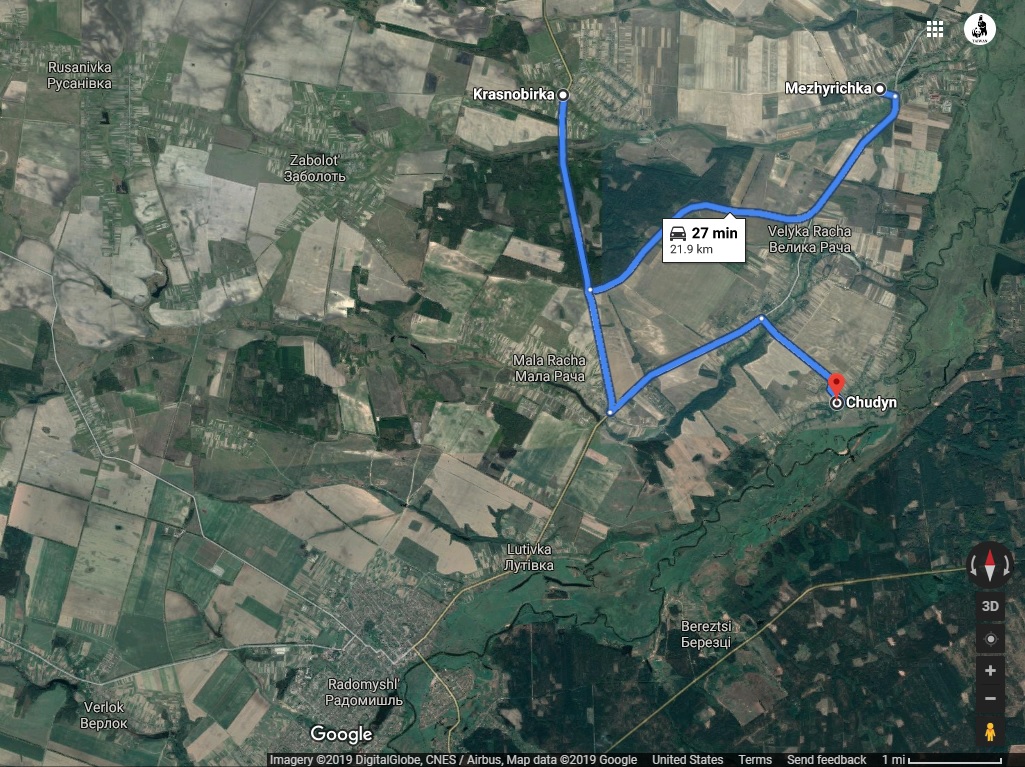

![[燈] #改 7th (夜間) - 8th of December, Zhytomyr Oblast.](https://lavieillegarde.wordpress.com/wp-content/uploads/2019/06/e78788-e694b9-7th-e5a49ce99693-8th-of-december-zhytomyr-oblast..jpg)
![[燈] 7th (夜間) Horodchyn Городчин 前往 Chodory的路上](https://lavieillegarde.wordpress.com/wp-content/uploads/2019/06/e78788-7th-e5a49ce99693-horodchyn-d093d0bed180d0bed0b4d187d0b8d0bd-e5898de5be80-chodorye79a84e8b7afe4b88a.jpg)

